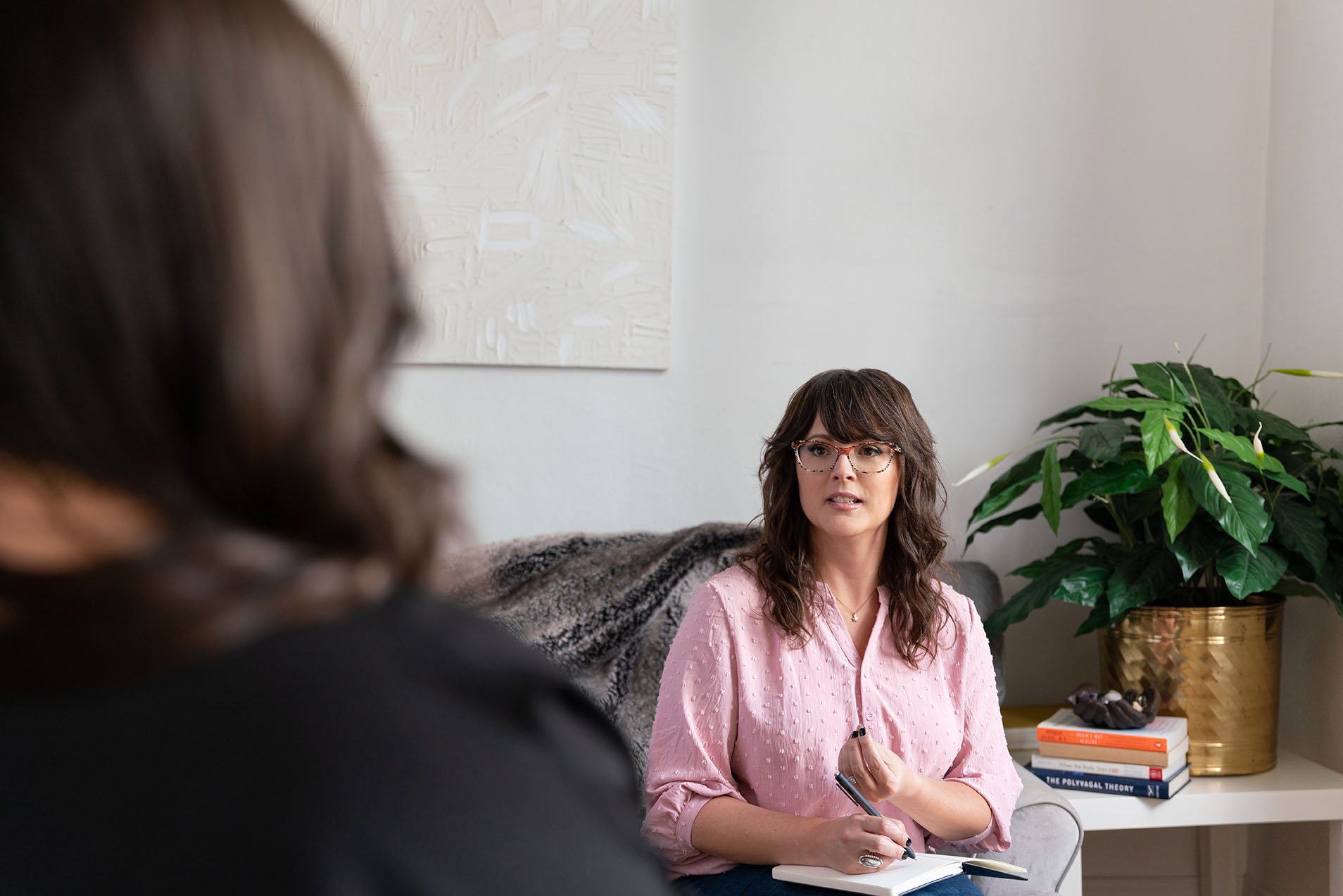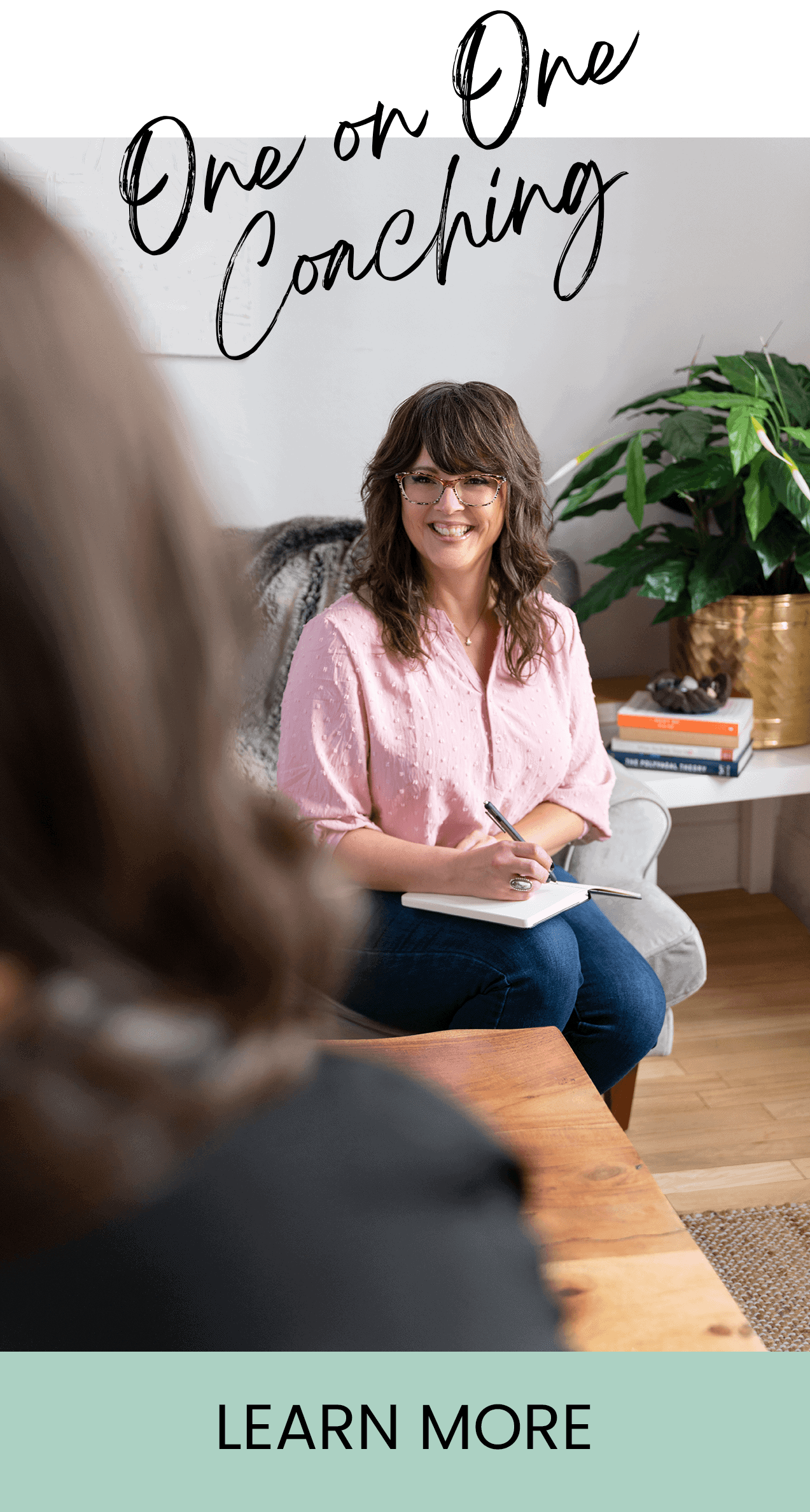What to Expect in a Trauma-Informed Coaching Session
This is advice on how to set expectations for a trauma-informed coaching session and what to expect in a one-on-one, trauma-informed or trauma recovery coaching session with me.
Here’s what we’ll go over in this article:
What to Expect from Trauma-Informed Coaches
All coaches are a little different. And, to drill down further, all trauma-informed coaches (we are mighty but few, and growing in number by the day) may employ similar techniques and have similar educations in trauma, but we are all different as well.
So, at a high level, here’s what you can expect to experience during legitimate trauma-informed coaching in general:
Your coach should feel safe and trustworthy and will be patient as feelings of trust and safety develop.
Your coach will listen and observe intently, with the ability to recognize patterns in your behavior over time and subtle shifts in your emotions.
You do not have to rehash the details of your trauma (unless you want to) for the coach to be able to successfully coach you.
You won’t be judged and the coach is trained in ways to remain neutral .
Your coach will be respectful and inclusive of your psychosocial and cultural orientation.
Your coach will help regulate the atmosphere of the session rather than mirroring your emotions if you’re upset.
Your coach knows enough about trauma responses and symptoms that he or she can recognize when they occur in session or in life as you describe them and ask questions to help you heal or make connections between what’s going on and the outcome.
Your coach knows through and through that no matter what you’ve been through, you’re not broken. You are whole and capable. You have all that you need within you.
You lead the content of the session while the coach owns the process.
Your coach champions you and believes in you.
Your coach will support you, even if that means challenging you from time to time.
The trauma-informed coaches I personally know who came out of the same certification program as me honor these ideals in their own way.
For the rest of this article, I’ll drill down into what you can expect in a coaching session with me. Keep in mind that if you’re looking at working with a different coach, his/her/their sessions might be a little different.
Coaching Session Overview
In a coaching session with me, you decide what we talk about and what areas of your life or behavior you want to change.
These sessions are characterized by making meaning of your experiences and moving forward in new and healthy ways. We get there through deep thinking, soul searching, connecting to your body, alignment with your values, noticing a new deep awareness, action items, and accountability (if you want it).
You Might Also Like: What My Coaching Process is Like From Start to Finish
Oftentimes, clients also experience deep perspective shifts — the ability to look at a situation differently and see it from different angles to approach it in a newer, healthier way.
We strive to stay in the present moment in and out of session in a way that shapes your desired future. If the past comes up, that’s totally okay. We honor it because it shaped you into who you are today. But then we’ll figure out what you can keep and what you can release from it.
We’ll sit where you’re at, celebrate your wins, and move you toward your goals.
This might sound simple at first, but if you look closely, you’ll be amazed at the moving parts, from logistics to skill, of the session that come together to create a magical flow between client and coach. And if you’ve ever experienced the flow, you know it’s the place to be!
The Logistics of Joining a Coaching Session
There are a few important things to note about making it to your session so you can even do the work in the first place.
Joining the Session
When you schedule your session, you’ll receive a secure Zoom link from me. We’ll simply join our Zoom session at the scheduled time to get started.
Before we start our coaching relationship, you and I will promise to make our best effort at joining our sessions on time.
You'll want to ensure you’re in a private place where you can be fully present and feel completely safe to open up and be vulnerable. You’ll be exploring personal topics and having the privacy to really let your guard down and be honest gets you the best results.
If letting your guard down sounds scary, that’s okay. We’ll address that further down in this article.
Running Late for a Session
If you’re running late and text to let me know, a lot of times I can adjust the session times as I build in some padding in between coaching sessions throughout the day. However, there will also be a lot of times that if you join late, we’ll still need to end the session on time so I can honor the other clients who are scheduled that day.
Missing a Coaching Session
If you need to reschedule or cancel a session, I ask that you give me at least 24-hours notice. I do make exceptions for real emergencies or unforeseen circumstances. However, if you reschedule or cancel within 24 hours of your scheduled session and it’s not an emergency or unforeseen circumstance, you will lose that session.
If you miss a session without letting me know you need to reschedule, you will also lose the session.
I have this policy for two reasons.
When you’re chronically stressed, overwhelmed, or feeling trauma-related anxiety, it can be hard to show up some days. Not all days, but some days. If you don’t show up regularly, you won’t make the progress you need. So, even if you wake up on the day of a session and all you can bring yourself to do is join the Zoom call, that’s a win in my book. I promise we’ll find something meaningful to do with our time together, even if you don’t know what that could be. It’s important to still show up anyways to honor your investment in your own well being. This policy helps with that.
I’ve had clients who’ve rescheduled on the day of a session for weeks on end, and it doesn’t work for either of us. That’s because if you’re not coming to your sessions regularly, you’re not going to get the results you want. Part of that is if I let you reschedule all of your sessions at the last minute, your program would go on indefinitely. While I love seeing you (seriously — it brings me so much joy to coach you), I wouldn’t be doing my job if you needed me forever. While it’s not my top priority, I do have to make a living in order to run this coaching business and be able to coach you. I couldn’t be financially sustainable if I allowed you to reschedule at the last minute over and over with no financial return for me. If you aren’t serious about your investment, it’s better that we not force it and we start over at a time you’re really ready. This allows space for other clients who are serious to have a spot and I can remain financially sustained.
Help for Knowing if You’re Really Ready for Coaching: Why and When to Choose Coaching for Healing Trauma
The Parts of a Coaching Session
Once we’ve joined the coaching call, the flow of the session starts.
You Might Also Like: What My Coaching Process is Like From Start to Finish
It can change from session to session depending on how you show up and how you need me to show up, but in general, if you’re feeling particularly resourceful and ready to go, this is how a session with me flows:
Connecting with Each Other
After we join the session and say hello, we can have as much casual conversation as you’d like to help you feel connected to me. We can spend entire sessions talking or connecting until you feel completely safe to let your guard down or parts of it down. Gradually, you’ll see that I’m dependably here for you and I really care.
Over time, the amount of time we spend connecting at the beginning of the session can either increase or decrease depending on how safe you feel and how fast you want to accomplish your goals.
I’m totally okay with having fun conversation about life or what’s going on before we start or I’m also perfectly okay with jumping straight into coaching. It will not hurt my feelings if you don’t want to chat first.
Grounding into the Session
As the coaching starts, I can help you ground or calm into the session, if needed. We do a check to ensure you have everything you need to be fully present and ready to work and play.
At this point, we can do breath work, meditation, or you may simply want to take a sip of your water or open a notebook you’re taking notes in.
You’ll want to be in a comfortable seat, but also have the flexibility to stand and move if you need to.
Over time, I get to know what helps you become present at the beginning of each session and won’t have to ask on most days — unless something changes. Many times, you’ll likely join already ready to go and present.
Either way is fine, and I gently hold the space for you to show up however you need to show up in that moment.
Identifying What to Talk about
I then check in with you to see what you want to accomplish in the current session. I do this in a variety of ways, always making sure what comes up for you somehow ties back to your overarching desired outcome or goal.
Exploring Possibilities, Emotions, Thoughts, and More
To get to the root of what you want to focus on, we explore your belief system, perspective, emotions, bodily sensations, and play around with possibility. (Playing with possibilities is actually really fun — the sky isn’t even the limit for what’s possible).
This is the biggest part of the session where you’re focused completely inward and I’m listening as intently as possible.
Emotions typically come up. And that’s absolutely okay and even needed in a lot of cases. You might want to bring tissues to your session just in case.
Your Developments and My Observations
As we explore and uncover areas that are key to unlocking the outcome you want, I repeat back to you what I’m hearing you say. I also tell you, from time to time, what I’m seeing in your body language and facial expressions, or patterns that have surfaced over time.
At times, I challenge you and point out contradictions to ensure you’re really going in the direction that would light you up the most. This usually feels good, and I do it in a gentle way always with your best interest as the intention. But sometimes, it may feel bad or you might not like me for a second. Most of the time, you will like me though.
Action Steps
If you want to take a tangible action based on what you learned about yourself in a particular session, I walk you through what it would take to accomplish it. What would get in your way or support you in being successful? We envision the big picture, but also drill down into the logistics, if that’s what you need.
However, not every session needs to produce an external action. Perhaps processing our talk or your emotions as they come up is all the action you want to take. And that’s okay.
Solidifying Your Self Discovery and Celebrating Your Progress
To end the session, I’ll ask a question that has you recap what you learned about yourself in some way. This not only helps solidify what you learned but it helps measure the success of the session and is typically something we can reinforce in future sessions or use in solution-finding moving forward.
And this kind of internal work is hard work! All my clients should be proud of what they do in each session. Even one tiny step is progress, so I’m always looking for ways to acknowledge that and reinforce it before we end the session.
Coaching Session Length
Depending on the coaching package you choose, I offer sessions in lengths of 90 minutes, 60 minutes, 30 minutes, and 15 minutes. The most common session length is 60 minutes if we’re meeting weekly.
I’ve noticed that if we meet every two weeks or something comes up and we end up meeting only once in a month, a 90 minute session is oftentimes needed, depending on where you're at in your program.
The reason it’s important that I bring this up is because I don’t like cutting you off if we’re in the middle of uncovering something important. But at the same time, honoring the session length ensures that I give each client the time they’ve paid for as well.
I have experimented with a few two hour sessions with select clients and have learned that two hours is typically just too long to sustain the type of intense introspective and interoceptive work we do together.
Starting and Ending Sessions on Time
I do my best to keep sessions at the length they’re scheduled for — directing the conversation towards a wrap up in the last 15 to 10 minutes of the session. If we don’t get to an important topic in the time we have, I will make a note of it to bring up in the next session. Sometimes, you’ll want to go with it, and other times, it will have passed or resolved in the time between sessions and we move on to something else entirely.
In turn, I ask that you schedule the appropriate amount of time depending on what’s coming up for you. If we need to go over at times, if I’m not scheduled back to back, I’ll allow it. If I am scheduled back to back and our stopping point is less than ideal, I’ll check back in with you when I’m out of sessions and see if we need to schedule another session sooner than normal.
Either way, I appreciate your understanding, which allows me to be the best coach possible to all my clients.
Coaching Session Frequency
Small chunks of work (like a 60-minute session length) coupled with a slow, steady, consistent pace are the best way to make progress.
I typically recommend my clients schedule one session per week. Then, the client and I re-evaluate the frequency they’re coming in as needed. Sometimes this results in moving to an every-two-weeks schedule. However, once every week or once every two weeks is the most consistent way to make progress when you’re working your first program.
Once you’ve graduated a program, if you want to keep going, then you we can talk about going to a once-a-month schedule.
My Coaching Style
The presence and energy I bring into sessions is by far the most commented on by my clients than anything else about my style. This started from day one, even as a student.
Zen is how some of my coaching clients describe it. Slow-paced, methodical, gentle, and compassionate are also words I’ve heard them use. These qualities come into play when co-regulation of your nervous system is important.
I would also add that my style is open, adaptable, and flexible. I can meet you where you’re at if it’s emotionally high and if you’re emotionally low, I can maintain my own regulation to help you co-regulate.
I take notes when I coach as I find it helps me identify patterns and key elements of your exploration.
I typically don’t interrupt. I actually hate interrupting because it seems like a form of confrontation, which is difficult for me just as a person, coaching aside. But sometimes I will interrupt you if it’s necessary to stay on track or you’re repeating the same thing over and over. After all, you’re paying me good money to get unstuck and heal.
I take my time when choosing language and forming questions or relaying observations. We are in no hurry, even if you show up in overdrive.
Listening intently at a deep level is what I’m doing most of the time though.
I’m able to show up for you like I do because I care about you as a person. Because I care about you, I highly prioritize my own self care — just as it’s extremely important to me to have the energy and time to have quality time and a loving connection with my husband and kids, I know that I need energy and presence to show up for you as my best self. So know I really do prioritize that.
I prepare before sessions by becoming present and centering myself. I wrap up after sessions by reviewing what we went over and centering myself again. I leave plenty of time in between sessions so that I don’t bring the energy of a previous session into the next for a different client. I purposely keep my calendar spaced so I have this important cleansing time.
By no means am I perfect at self care or the healthiest person in the world, but I do my absolute best to show up as my best for you, every session.
My Approach to Coaching
I like to have a healthy balance between spontaneity, which allows for flexibility and differences in clients and their circumstances, but also structure, to help keep the coaching process on track.
Part of the fun about finding a coach that is a good fit (at least for me) for you is understanding how that coach’s background influences their coaching style and approach.
For instance, I’m a methodical person in general, and I have classical education in journalism with minors in business and English. I love how lessons from literature can teach us about human psychology, and if I hadn’t gone the humanities route, I would have for sure been some kind of biologist. Because our biology is so tightly intertwined with our psychology. And our minds thrive in philosophy, which is also tightly intertwined with literature.
All this to say, I highly value the human experience from a human perspective, and I truly believe that our existence and experience of it is valid, valuable, and important.
Our human nature is what it is, but it can also change.
I value your heart, but I also value every part of you — even the one’s you’ve abandoned or locked away. I value holistic care and wellness.
You are a whole human and all the parts and pieces of you work together to create who you are. And you are extremely important.
I’m a trauma survivor myself, so I can empathize with you and I have much more in common with you than you might realize from being with me in a session.
All of these facts about me inform how I show up for you and stand fast as a support.
The Tools I Use
How I use the tools that are available to me in coaching sessions is primarily what makes me a coach as opposed to a therapist or counselor, even though there are many similarities.
Knowing when and what tools to use to assist with trauma recovery and trauma healing is also highly dependent on how you show up as the client and what you need in that moment.
You have a choice in how your coaching session goes. I ask for clarification and consent before going in a certain direction or doing a certain exercise, for example.
Because of the personalized nature of each session and the vastness of the tools I can use, I hesitate to describe a list of tools here as there’s no way I could cover them all. Plus, I’m always learning new tools and techniques to add to the list. So I settled on listing the ones that I use most often and one that I try to never use.
Here are the tools I use in practically every session:
Questions
Questions, typically open-ended, are my primary tool for every session for every client. You will never have a session with no questions. They are what drive coaching and what we’ll spend the most time on.
Exercises
The exercises I can bring into a session depending on what’s coming up for you range. Here are some of the most used exercises:
Wheel of Life
Visualization
Grounding into a session
Mindfulness
Identifying core values
Exploring time
Moving your body (nervous system regulation techniques)
Planning
There are quite a few, so I won’t list them all here. But just know, I do ask for your consent before moving forward with exercises.
Repeating Your Words
Sometimes when you’re processing an experience, making meaning of it, or are immersed in self reflection, you don’t always hear everything you’re saying. You might also hear it, but not fully register what that means for yourself. Or, at times, you hear what you’re saying and you see it from one perspective. But when I repeat your exact words back to you, it sounds different. It can shift perspective. It can help you realize the impact of what you said at times, and it can affirm your own inner intelligence and wisdom. It builds trust not only between you and I because you know I’m listening, but it builds trust in yourself because it proves to you that you really do have the answers or at least can get to them.
Co-regulation
By forming a genuine connection and relationship with you, co-regulation naturally and organically occurs. I’ve gotten particularly good at regulating my own nervous system in the face of personal triggers. I remain calm and hold space for however you need to show up, even if really overwhelming negative or positive emotions occur. We talk about the emotions while I’m remaining present and noticing your body language, tone, energy, and environment in addition to your words. The engagement we share while you’re experiencing certain emotions helps keep you present and learn that you can also regulate in the face of these emotions.
Observations
In the short term, observations help me determine which questions to ask next and sometimes how to ask them.
Over time, I start to notice your wins, patterns, contradictions, things you like to talk about, things that bother you, etc. I notice how your mood or energy changes depending on what you’re talking about.
When the time is right, I tell you about my observations. Sometimes this challenges you and makes you uncomfortable. Other times, it shines light on something you couldn’t see yourself because you were too close to it — you know, the forest and the trees. Either way, I ask for your consent to share my observations. And if you want to say no, you can, and I won’t share.
Now for the tool I don’t use…
Why I Try to Avoid Giving Advice in Coaching Sessions
Firstly, I learned in my coaching education to not give advice in coaching sessions. This is one of the ethical guidelines of the International Coaching Federation (ICF), which is the leading global coaching organization that sets the standards for the part of the industry that’s actually standardized. The ICF accredited the certification program I went through, so I lean toward their style of coaching.
Related: How to Choose the Best Coach for Yourself
As I’ve gained more experience and thought about my own stance on the matter, I’ve realized I totally agree with not giving advice in coaching sessions.
My experience of healing from trauma is my own. What worked for me may work for you, but it may not. So, I try to avoid giving advice while in coaching mode. That may seem harsh or not what you’re used to when being coached, but…
While you might want me to connect the dots for you or tell you how to do something, there are several reasons it’s beneficial that I not do that:
Even if it takes longer, when you make connections for yourself, they’re more powerful and more likely to stick.
When you make your own connections from one experience to a lesson or self awareness about yourself, it’s authentic and aligned with who you are (not who I am and how I see the world).
If I’m giving you the answers, that takes away from you being able to prove to yourself that you have them within you. When you can find them within yourself, this empowers you. You recognize how powerful and wise you really are.
When you’re a perfectionist and people pleaser, me telling you how to do something can create a codependent dynamic, which takes away from your own resourcefulness. And reconnecting you to your own resourcefulness is part of healing trauma.
If you really, really want advice though and ask for it as part of our overall agreement, I can take off my coaching hat at times and act as a consultant in some capacity. This would be to assist with solution finding.
Separate from that, I do sometimes provide brief educational statements about the impact of trauma to help lessen the overwhelm you may feel and help shift your perspective of what’s happening in your body and mind.
All that aside, education (and most of the time) spirituality are two other extremely important aspects of self healing trauma. They both have their place in your healing journey. Advice can overlap with education sometimes. I do value both education and spirituality and offer support in those areas outside of coaching sessions.
The Magic of Being in the Flow Together
To sum things up, all of these things I mentioned above add up to create a creative flow when you and I are in it together. I’m able to really get you and connect with you and you’re able to really feel seen and heard while you connect with yourself. It’s like we’re in sync and a healing energy surrounds us, even if we’re in different physical locations.
The flow is easy, even if we’re doing hard work. It feels almost effortless because we’re so engaged and in tune with what’s going on in the present moment, we don’t even have to think about it.
How can I even find sufficient words to describe what it’s like to be in “the flow” together in a session? It’s like…
Magic. It’s miraculous and beautiful.
Coaching has changed my life in beautiful ways and I’ve seen it do the same for many others. And now I’m incredibly grateful and happy that I get to give back by being a coach that you can come to. 100%.
Questions or Comments?
Feel free to let me know if you have any questions in the comments, or you can schedule a free consultation.
Related Posts
Hey there!
I’m Brandi Fleck, TICC. I’m a private practice, certified trauma-informed life coach and trauma recovery coach. All genders, sexualities, and races are welcome here. I primarily serve clients via one-on-one coaching and self-paced trauma education.
Find More on the Blog
Topic
- C-PTSD
- PTSD
- acceptance
- accountability
- action
- agency
- anxiety
- awareness
- behaviors
- body
- books
- burn out
- calm
- coach specialization
- coaching approach
- coaching fit
- coaching framework
- coaching style
- compassion
- control
- coping
- courses
- credentials
- crystals
- diy
- emotional regulation
- executive function
- expectations
- fear
- fibromyalgia
- flow
- getting started
- gifts
- goal setting
- goals
- grief
- gun violence
- habits
- healing
- healing modalities
- holding space
- holistic
- hope
- how to
- inspiration
- intake process
- intuition
- knowing yourself
- lifestyle
- mental healthcare
Recent Posts


















